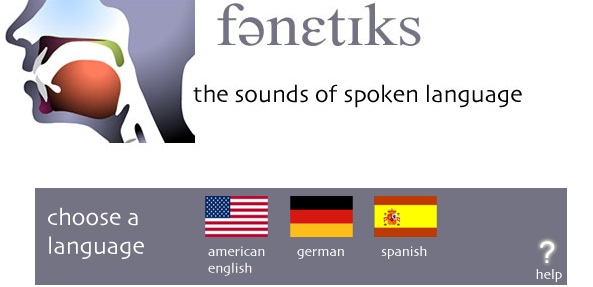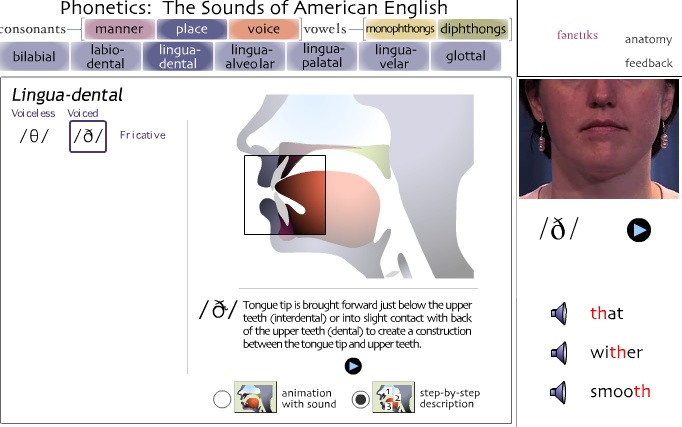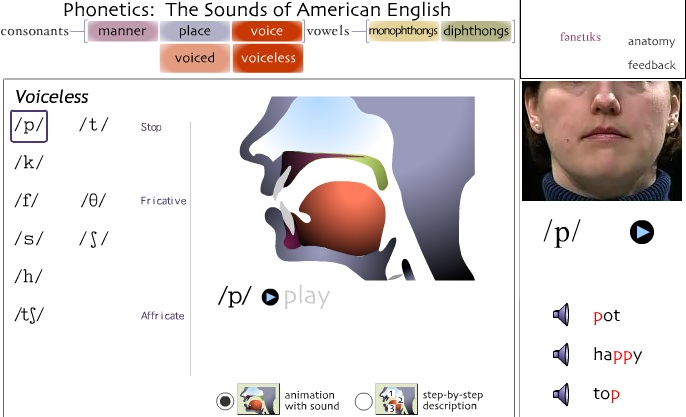« Narrative Structure and Medium: "The Red Planet" and the Future of the Educational DVD-ROM | Main | next \ text update »
January 10, 2006
Learning Language Pronunciation

The University of Iowa hosts a great example of using digital technology to improve teaching language pronunciation. The Phonetics Flash Animation Project demonstrates how to pronounce sounds with: flash animations of anatomic diagrams, video clips of people making a particular sound, audio files of words with those sounds, as well as traditional written descriptions.

The clear visual and interface design requires little written directions and documention. A key to the success of the project relies in the fact that it provides students with information in many different ways. There are step-by-step directions on what part of your body are used. Animated drawings of a person's profile show the sound being produced. Where as, the video clips show a real person (shown in the front view) making the sound. Finally by providing three examples of the sound in a word, the student receives an opportunity to contextualize its use in an actual word. Another appreciated feature is that the project includes sounds used in German and Spanish that are not used in English, for example the rolling Rs found in Spanish.

Phonetics was a collaborative effort with the Department of Spanish and Portuguese, Speech and Pathology and Audiology, and Academic Technologies. Clearly, the end results show expert knowledge from all three participants. As well, a clean interface provides an enjoyable user experience which comes from many wise and simple design decisions. For example, using video versus animation for specific purposes. The front-on shot videos are more clear than would have been with animation, and the animations reveal a view that obviously would be impossible to show otherwise.
The site offers a drastically improved way of teaching how to produce sounds over traditional paper-based texts. This example hints that educators are only beginning to explore the vast possibilities of digital media in the classroom. It is difficult to imagine how any language class would not benefit from access to this kind of material for that particular language of study.
Posted by ray cha at January 10, 2006 4:29 PM
